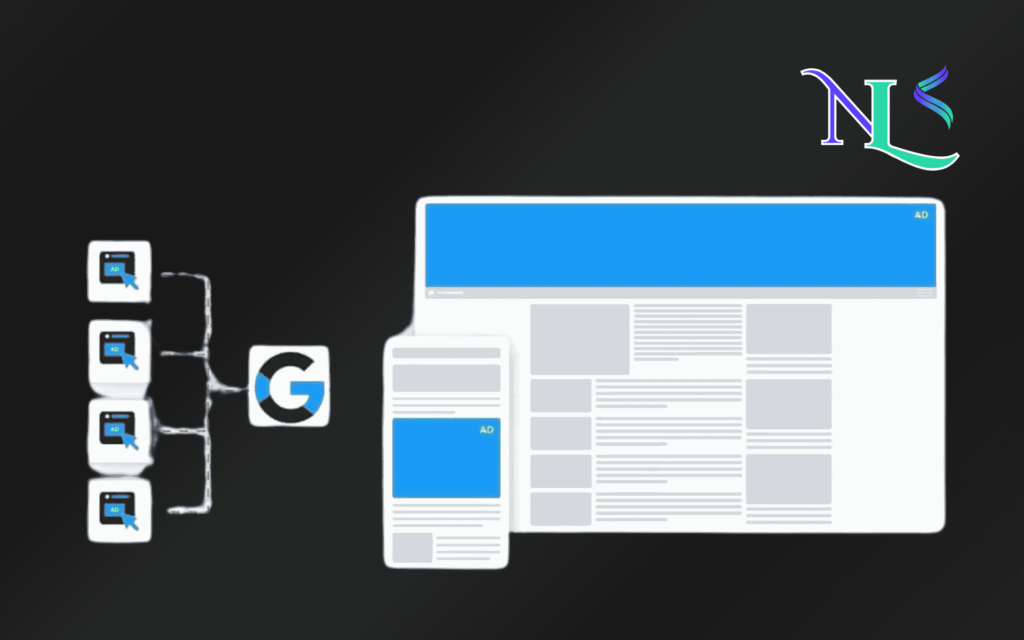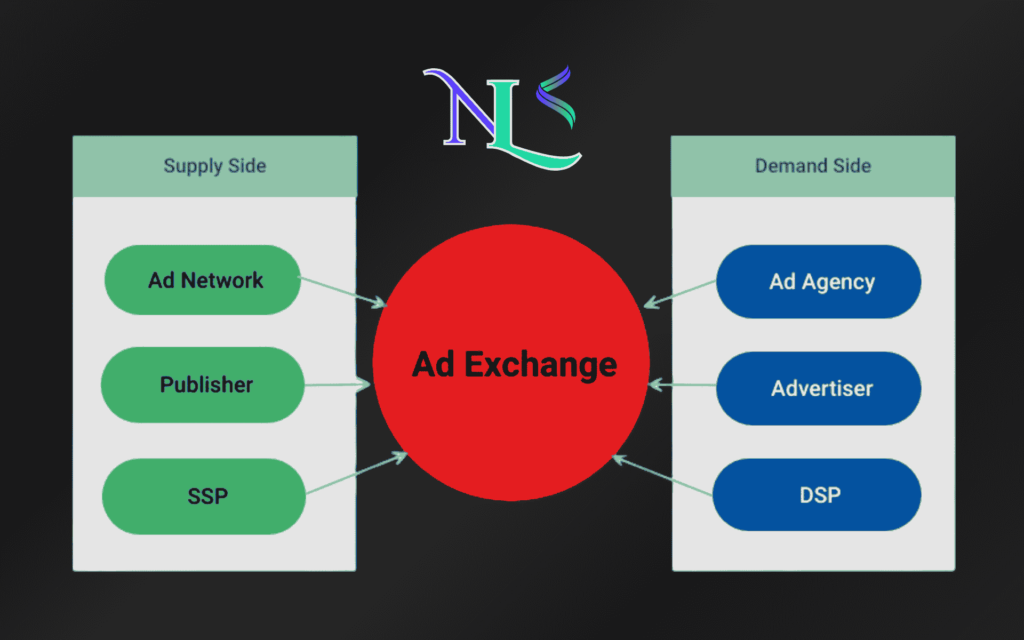In today’s digital landscape, advertising is all about precision, efficiency, and scale. Advertisers aim to reach their target audience while publishers seek to maximize revenue from ad spaces on their platforms.
AdExchange platforms have emerged as key tools in bridging the gap between advertisers and publishers. These platforms offer a seamless and automated way to buy and sell ad inventory in real time, providing significant advantages to both parties.
In this article, we’ll explore the world of AdExchange platforms, their key features, benefits, and how they are transforming digital marketing.
What Are AdExchange Platforms?
An AdExchange platform is a digital marketplace where advertisers and publishers trade ad inventory in real time. Unlike traditional ad networks, which act as intermediaries, AdExchanges enable direct, automated transactions between the buyers (advertisers) and sellers (publishers). This process often happens through programmatic advertising, which uses algorithms to automate the buying and selling of ads.
At the core of AdExchange platforms is Real-Time Bidding (RTB), a process that allows advertisers to bid on ad impressions as they become available. When a user visits a website, an AdExchange platform triggers a bidding process, and the highest bidder’s ad is displayed to the user, all within milliseconds.
Types of AdExchange Platforms
There are various types of AdExchange platforms that cater to different needs in the digital advertising ecosystem:
- Open AdExchange Platforms: These platforms allow any advertiser or publisher to participate. It operates on a large scale, offering a wide range of ad inventory.
- Private AdExchange Platforms: In contrast to open platforms, private AdExchanges are invitation-only marketplaces where premium publishers sell their ad inventory to select advertisers. This creates a more controlled environment.
- Programmatic AdExchanges: These platforms use advanced algorithms to automate ad buying and selling. Advertisers use demand-side platforms (DSPs) to access inventory from AdExchanges, while publishers use supply-side platforms (SSPs) to sell it.
- Real-Time Bidding (RTB): A core feature of most AdExchanges, RTB allows advertisers to bid on each individual ad impression in real-time, ensuring the most relevant ads reach the right users.
How AdExchange Platforms Benefit Advertisers
AdExchange platforms offer several advantages to advertisers:
- Access to a Broad Range of Publishers: Through a single platform, advertisers gain access to thousands of websites and apps, enabling them to reach diverse audiences.
- Real-Time Bidding (RTB): RTB ensures that advertisers only pay for ad impressions that matter to them. They bid on inventory in real time, optimizing their budget for better results.
- Audience Targeting: AdExchanges allow advertisers to target specific audience segments based on demographics, behavior, or interests. This increases the likelihood of reaching potential customers with relevant ads.
- Improved ROI: The efficiency and automation provided by AdExchanges help advertisers get the most out of their ad spend, reducing wasted impressions and increasing overall return on investment (ROI).
How AdExchange Platforms Benefit Publishers
Publishers also reap significant benefits from AdExchange platforms:
- Monetization Opportunities: Publishers can sell their ad inventory to multiple advertisers, creating a competitive environment where ad spaces are sold at higher rates.
- Maximized Revenue: With the introduction of RTB, advertisers bid against each other, ensuring publishers get the best price for their ad space. This auction model drives up prices, leading to better revenue.
- Control Over Ads: Publishers retain control over what types of ads appear on their sites, ensuring they align with their content and audience preferences.
- Transparency: Publishers have access to detailed reports, which helps them understand how their ad inventory is performing and which advertisers are paying for impressions.
Key Features of AdExchange Platforms
Several key features make AdExchange platforms valuable to both advertisers and publishers:
- Programmatic Buying: This feature automates the ad-buying process, allowing advertisers to purchase ads at scale without manual intervention.
- Real-Time Bidding (RTB): Advertisers can bid on individual impressions in real-time, ensuring efficient use of their budget.
- Audience Targeting: AdExchanges allow advertisers to target users based on behavior, geography, device type, and more.
- Dynamic Pricing Models: AdExchanges support various pricing models like CPM (Cost per Thousand Impressions) and CPC (Cost per Click), giving advertisers flexibility in how they pay for ads.
- Integration with DSPs and SSPs: AdExchanges integrate with demand-side platforms and supply-side platforms to streamline the buying and selling process, ensuring that ad inventory is sold efficiently.
Popular AdExchange Platforms in the Market
Several AdExchange platforms dominate the market:
- Google AdX: Google’s AdExchange platform is one of the largest in the world, offering access to a massive pool of publishers and advertisers. It’s known for its powerful targeting options and scalability.
- OpenX: A well-known programmatic ad marketplace, OpenX provides transparency and efficiency in the ad-buying process. It supports both open and private AdExchanges.
- AppNexus: This platform is widely used for programmatic advertising, offering sophisticated tools for both buyers and sellers. It’s known for its advanced audience segmentation and bidding technology.
- NovaLoom: It is a fast-growing platform in the digital advertising space, offering innovative solutions for both advertisers and publishers. With advanced programmatic technology and real-time bidding. As the platform continues to evolve, it is positioning itself as a key player in the AdExchange market, providing efficient, scalable, and high-performance ad solutions.
Each platform offers its own set of features and pricing models, so choosing the right one depends on your specific advertising needs and goals.
Challenges of Using AdExchange Platforms
While AdExchange platforms offer numerous benefits, they also come with some challenges:
- Ad Fraud: One of the biggest challenges in programmatic advertising is ad fraud, where fake traffic or clicks are generated to siphon off ad spend. Advertisers need to ensure they work with trusted platforms to avoid this issue.
- Transparency Issues: Some AdExchanges lack full transparency, making it difficult for advertisers to see where their ads are being placed or how their budgets are being spent.
- Ad Blocking: With the rise of ad-blocking software, some users may never see the ads, reducing the effectiveness of campaigns.
How to Choose the Right AdExchange Platform
When selecting an AdExchange platform, consider the following factors:
- Target Audience: Ensure that the platform provides access to the right audience segments for your ads.
- Budget: Some platforms cater to premium advertisers with larger budgets, while others may offer more flexible pricing for smaller businesses.
- Platform Features: Evaluate features such as real-time bidding, audience targeting, and reporting capabilities to ensure the platform aligns with your advertising goals.
- Performance Metrics: Look for platforms that offer detailed performance reports to help optimize your campaigns over time.
The Future of AdExchange Platforms
AdExchange platforms are constantly evolving, driven by technology and market demands. Key trends shaping the future include:
- AI and Machine Learning: Artificial intelligence is being increasingly integrated into programmatic advertising, helping optimize bidding strategies, targeting, and campaign performance.
- Privacy Regulations: New regulations like GDPR and CCPA are impacting how data is used in advertising, pushing AdExchanges to adapt to stricter privacy standards.
- Omnichannel Programmatic: As advertisers seek to reach users across multiple devices and platforms, AdExchanges are evolving to offer more comprehensive, cross-channel solutions.
Conclusion
AdExchange platforms have revolutionized the way digital advertising is bought and sold, offering benefits to both advertisers and publishers through automation, real-time bidding, and audience targeting.
While challenges like ad fraud and transparency remain, the growing use of AI and stricter privacy regulations are driving further advancements in the industry.
By choosing the right platform and leveraging its key features, advertisers and publishers can maximize their reach, engagement, and revenue in today’s digital advertising landscape.









Great write-up, I am regular visitor of one’s web site, maintain up the nice operate, and It’s going to be a regular visitor for a lengthy time.